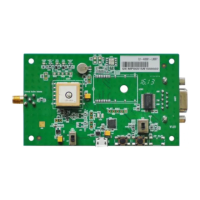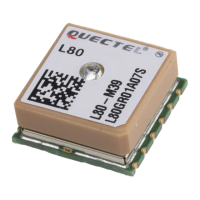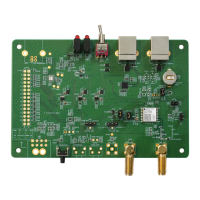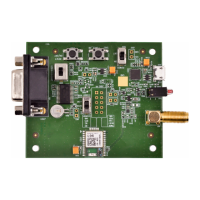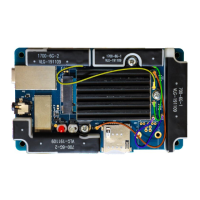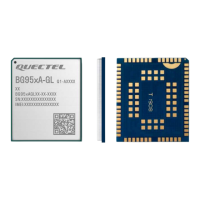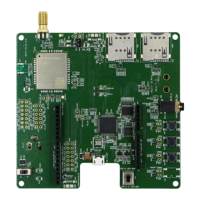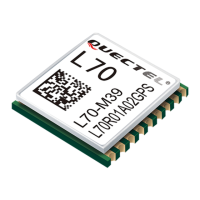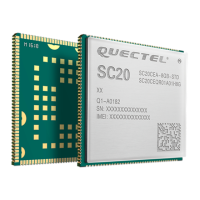GNSS Module Series
L76&L76-L_Hardware_Design 37 / 59
5.2. Antenna Design
5.2.1. Antenna Specification
All the three modules can be connected to a dedicated passive or active single-band GNSS antenna to
receive GPS, Galileo, GLONASS, BeiDou, and QZSS satellite signals. The recommended antenna
specifications are given in the table below.
Table 5: Recommended Antenna Specifications
The total gain of the whole antenna is the LNA gain minus total insertion loss of cables and components
inside the antenna.
5.2.2. Antenna Selection Guide
Both active and passive GNSS antennas can be used for the three modules. A passive antenna is
recommended if the antenna can be placed close to the modules, for instance, when the distance
between the modules and the antenna is less than 1 m. Otherwise, use an active antenna, since the
insertion loss of RF cable can decrease the CNR of GNSS signal.
CNR is an important factor for GNSS receivers, and it is defined as the ratio of the received modulated
carrier signal power to the received noise power in one Hz bandwidth. CNR formula
is as below:
Frequency Range: 1559–1609 MHz
Polarization: RHCP
VSWR: < 2 (Typ.)
Passive Antenna Gain: > 0 dBi
Frequency Range: 1559–1609 MHz
Polarization: RHCP
VSWR: < 2 (Typ.)
Passive Antenna Gain: > 0 dBi
Active Antenna Noise Figure: < 1.5 dB
Active Antenna Total Gain: < 18 dB

